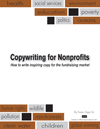There’s only so much that can be effectively communicated in a single direct mail letter, email, or page of web copy. But let’s stick with direct mail for today.
Let’s say you’re sending a letter to your house file. And you’ve decided to cut costs by reducing the number of mailings per year (something I’m NOT recommending). Or perhaps you flubbed up your schedule and missed a mailing.
Now you have two topics to cover. Traditionally each topic was handled successfully in its own letter. These repeat mailings have enjoyed nice donor response year-after-year.
So your boss brilliantly concludes that they’ll do just as well combined into a single mailing – maybe even perform better. After all; if the topics are popular on their own, why won’t they be just as popular teamed up in the same letter?
Here are just three of the risks you face with this gamble:
1) The same donors may not respond to both topics. The odds are that Topic-A resonates deeply with one subset of donors, and Topic-B to a different subset of donors. Sure, there’s probably some overlap but not 100%.
Takeaway: Before you mail, research your database for the answer on how your donor file responds to these two topics; don’t assume both topics have universal appeal.
2) The two topics are totally unrelated! The dilemma this creates is that you can’t force a connection that doesn’t exist. It’s like trying to fit a 3-inch pipe into a 1-inch hole. It won’t work. The letter won’t be as compelling because you’re forcing your copywriter to create a smooth flowing letter on two dissimilar topics. And neither topic can be developed to its full potential in the space allowed. It’s not as compelling and fewer people donate.
Takeaway: Don’t force it. Keep them in separate letters. Remember that donors don’t come close to remembering all the details you know by heart. They can’t fill in the blanks you create with partially developed story lines on too many topics.
3) Donors read letters in a variety of ways. Some start with the P.S. which sums everything up. Both topics will be touched upon … but a few sentences won’t be enough to make a compelling case out of the jumble for either topic. They may not read further. You don’t get their support.
Other donors start with the opening paragraph. If your lead is on Topic-A which they don’t care much about, they stop reading. Your Topic-B donor may never see their favorite issue in your letter. You don’t get their support.
Takeaway: You can’t control how donors will read your letter. You can’t assume they’ll read enough to decipher what you’re trying to say.
As an example, let’s say your charity is an elder care facility. Each year you have a letter that focuses on funds for building maintenance, repair, and upgrades. You highlight a story or two on how residents are happier because the new windows keep out the cold; or the canopy over the entrance keeps their family dry when they come to visit. And you cite the needs for the coming year and the difference these planned upgrades will make on the daily lives of the elder residents.
And another letter is on exercise programs to increase their mobility, balance, and overall health. You explain how the equipment and classes have reduced falls and injuries. Again, you share a story or two about a specific resident. And you outline the changes you hope to implement in the coming year with their support.
Each of those topics will fill a solid two-page letter. You start slicing and dicing and cramming it all into one letter and I believe you’ll lose donors. Again, this is because neither topic receives the degree of coverage it deserves.
Imagine trying to write a P.S. for a letter with both those topics. It might look like this:
Exercise programs are one of the best ways to keep your loved one walking, more independent, happier, and far less likely to fall. And it’s also important to have a building with new tile floors because we’ll eliminate trip hazards. Give today to Acme Elder Care. Give the one you love an even better place to live.
It really doesn’t work, does it? Your donor looks at that and starts shaking their head. They’re wondering, “What ARE they talking about?”
Jamming multiple unrelated topics into a single letter may actually cause you to raise less revenue. Furthermore, trying to cover two, three, or six programs in a single letter – even when they’re closely related – still results in a weaker letter. Your theoretical cost saving measure might end in disaster.
Moral of the story: Stick to your schedule and don’t miss mail dates. And as much as possible, allow each direct mail letter to focus on a single topic so a compelling case for giving can be made.
